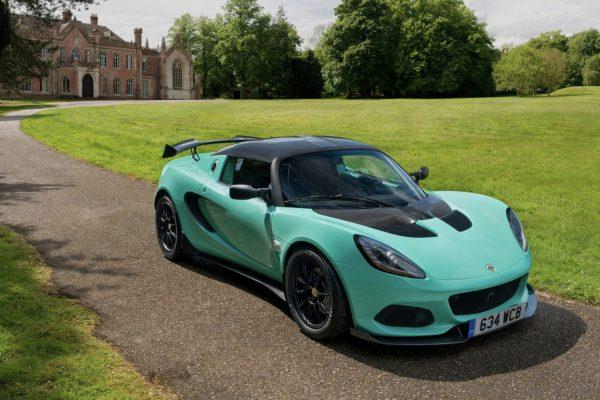We have been covering luxury and supercar brands over the last few days, but today we find ourself looking at a brand that focuses less on the lifestyle elements found in the other brands, and more of the performance and agility of its vehicles. The current portfolio consists of 2 lightweight, street legal track cars and one practical sportscar. Though the company has survived under previous owners, it’s never quite took on many of the more focused brands we’ve mentioned in previous articles in this series. Partially, it’s down to the raw, track-focused nature of their cars, but perhaps there were other reasons. Let’s get into these in a bit more detail by looking at each of their models.

Current Models
Elise
The Elise is a great place to start for the Lotus brand. Think of it as your first track car – a little but more modern than a Caterham, but still very mechanical. It’s a lightweight, rear-wheel drive roadster with its engine mounted behind its 2 seats. The Elise is in its 3rd generation, which debuted in 2010. It is powered by a supercharged 1.8-litre 4-cylinder engine and a 6-speed manual is your only transmission choice right now. Two variants exist, the base Sport 220 and the high-performance Cup 250.


Exige
The Exige started life as a more hardcore, coupé version of the Elise but has now evolved to have a much larger engine and a roadster variant of its own. It is also in its 3rd generation, which was first shown in 2011. The layout and silhouette of the Exige is quite similar to the Elise, but it’s a little larger to accommodate its supercharged 3.5-litre V6 engine and has more aggressive styling. According to the Lotus website, they now offer three variants of the Exige – the Sport 350, Sport 410 and Cup 450.


Evora
The Evora is currently the flagship of the Lotus brand. It’s a 4 seater (2 in front, 2 at the rear), mid-engined sports car with power going to the rear wheels. Despite the engine being in the rear, it still has a boot. This makes it one of the more practical performance cars available. However, it’s a little long in the tooth compared to many of its rivals. It was introduced in 2008 and was facelifted in 2015 as the Evora 400. The 3.5-litre Toyota sourced V6 engine has been supercharged in newer models of the Evora, and its horsepower rating is indicated by the 3 digits. There are a few variants on sale now including the Evora 400, Evora GT410 and Evora GT410 Sport.


Upcoming model
Evija
Since being bought over by Geely Auto, Lotus has unveiled their first all-electric sportscar, though with nearly 2000 horsepower combined from 4 electric motors, it’s more of a hypercar on paper. The vehicle follows a 2 seater configuration with 1 motor placed in each wheel powered by a 70kWh lithium ion battery.


Personal Notes
I haven’t really left any personal notes on previous instalments of this series, but with Lotus, I feel compelled to. It’s a pretty unique car company even in this luxury/supercar segment we’re trying to cover. Perhaps the reason it’s unique is because other companies figured out this particular market was not a profitable one. It’s tough to sell expensive, track-focused cars when rich people have become accustomed to the finer amenities and comforts offered by other brands. Perhaps the Evora was a step in the right direction, but was too little too late. We can see that under Geely, interest in the brand has picked up and there’s a huge shift in the kind of product they will offer. Maybe they will have to give up their identity a little for a little taste of success. It’s good that Geely didn’t force an SUV out straight away though, but this will come later on.
For other brands in this series: